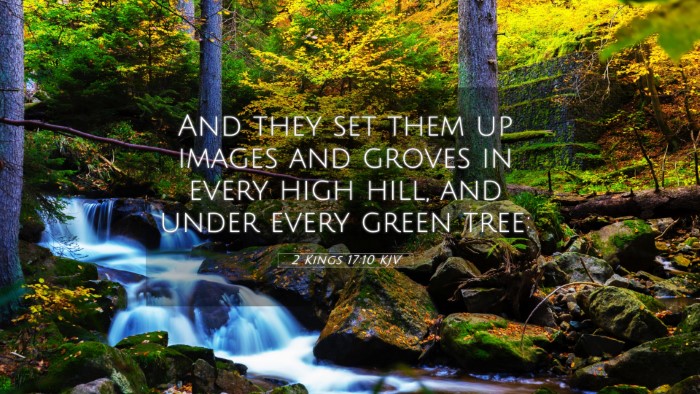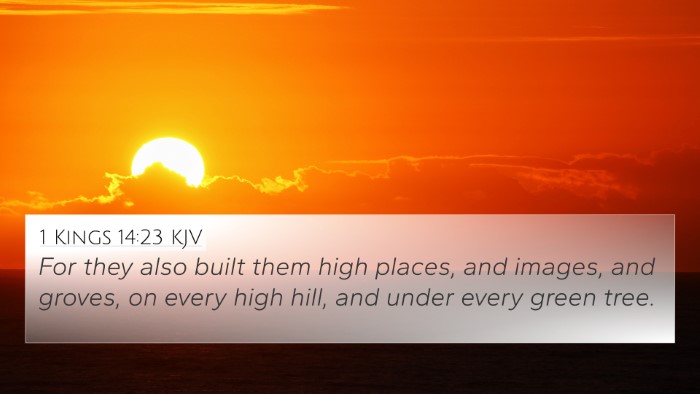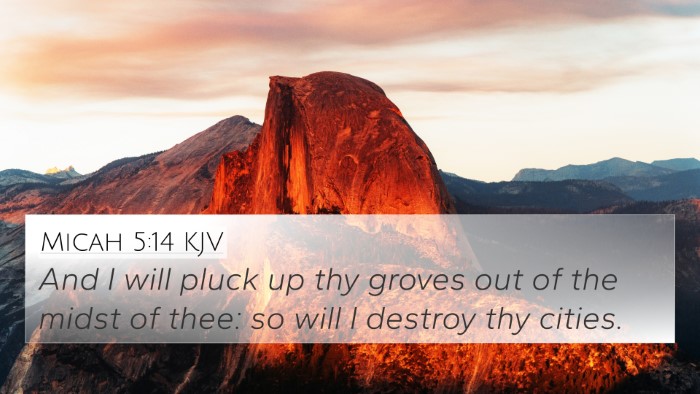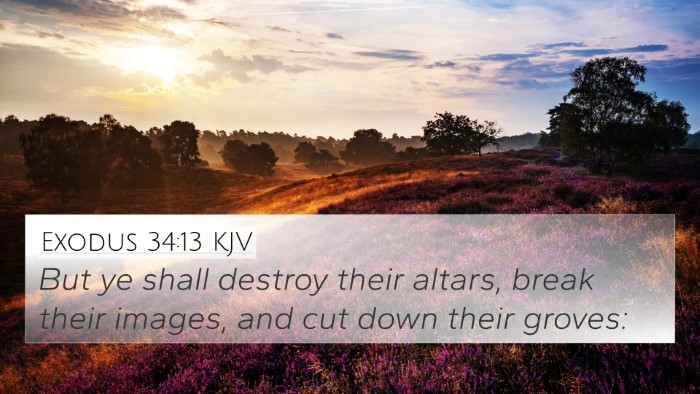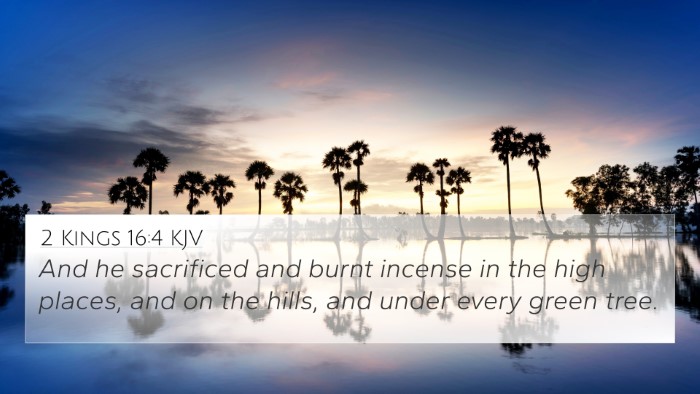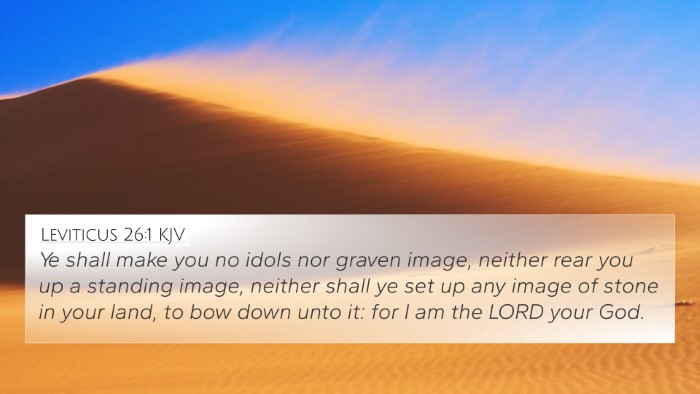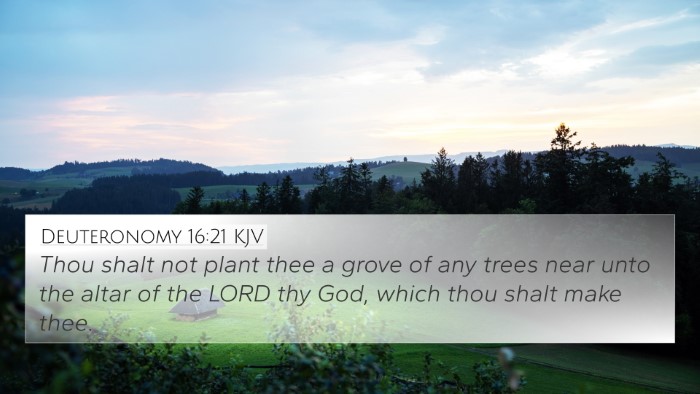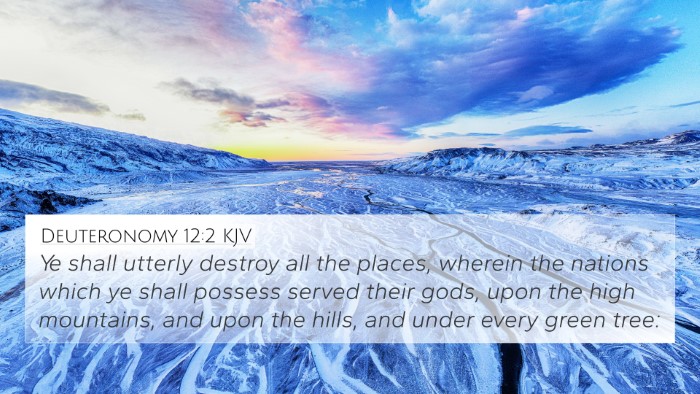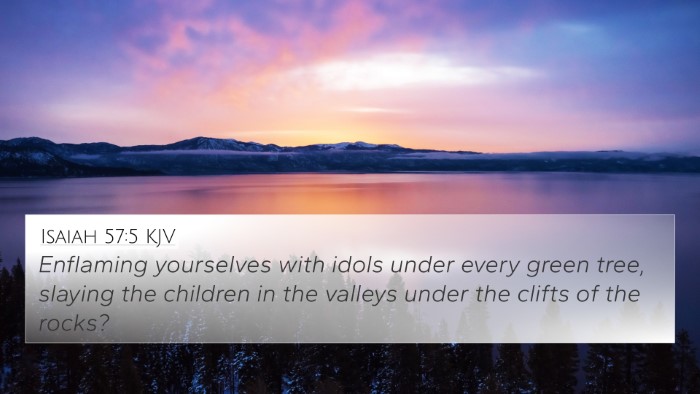Understanding 2 Kings 17:10
Verse: 2 Kings 17:10
"And they set up images and groves in every high hill, and under every green tree."
Summary and Interpretation
In this verse, we find a critical moment in the history of Israel, highlighting the deepening idolatry within the nation. The setting up of images and groves denotes a systematic implementation of pagan worship practices that directly conflicted with God's commandments.
Historical Context
The context of 2 Kings 17 is the narrative of Israel's decline and eventual exile. The people of Israel turned away from the worship of Yahweh, engaging instead in practices of the surrounding nations, affirming the theme of disobedience found throughout the Old Testament.
Thematic Insights
- Idolatry and Apostasy: The installation of images (idols) is a direct reflection of the people's disregard for God. It represents the broader theme of Israel's sinful departure from the covenant relationship.
- Divine Judgment: This verse sets the stage for the ensuing judgment from God, which is a consistent theme in the prophetic writings, particularly in how divine judgment follows disobedience.
Commentary Insights
Matthew Henry’s Commentary: Henry contextualizes this verse by illustrating how the high places and groves became symbols of corruption. He emphasizes that such actions were not merely incidental but indicative of a heart that had strayed from the true God.
Albert Barnes’ Notes: Barnes highlights that the high places of worship were not aligned with God’s commandments. He points out that these locations often became centers for sinful practices, tarnishing the worship meant for God alone.
Adam Clarke’s Commentary: Clarke discusses the cultural influences that led Israel into such actions, suggesting that the neighboring nations’ customs infiltrated Israelite practices, paving the way for syncretism.
Cross References
This verse connects thematically with several others that explore idolatry and God’s response. Here are some relevant cross-references:
- Deuteronomy 12:2-3: Commands regarding the destruction of high places.
- 1 Kings 14:23: Details about idolatrous practices of Israel.
- 2 Kings 21:3: Discusses Manasseh’s increased idolatry.
- Jeremiah 2:27: Describes the forsaking of God for wood and stones.
- Ezekiel 20:28: Mentions the high places where sacrifices were made to idols.
- Romans 1:21-22: A connection to the consequences of not honoring God, leading to idolatry.
- 1 Corinthians 10:20: Paul discusses the significance of sacrifices to idols within the church context.
Application for Today
As modern readers, the lesson from 2 Kings 17:10 serves as a powerful reminder of the dangers of turning away from God and succumbing to the influences of culture that contradict Biblical principles. It challenges believers to examine their own lives for any ‘high places’—areas of compromise or idolatry that need to be addressed.
Conclusion
The study of 2 Kings 17:10 is enriched through a thematic understanding and connections to other scripture. Through tools for Bible cross-referencing, believers can trace the implications of idolatry across the pages of the Bible, fostering a comprehensive understanding of God's character, faithfulness, and desires for His people.

